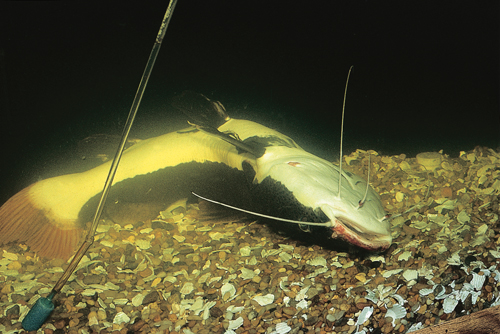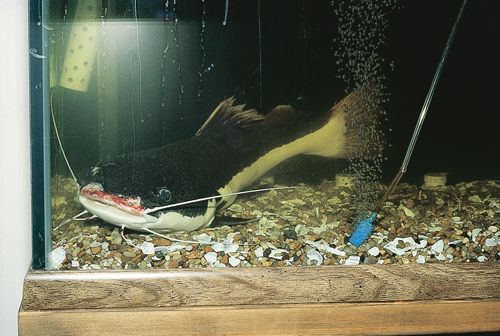Difference between revisions of "Ornamental Fish Q&A 13"
Ggaitskell (talk | contribs) |
|||
| Line 13: | Line 13: | ||
|a1= | |a1= | ||
Nitrite toxicity, probably secondary to destruction of the biological filter with the administrations of antibiotics directly in the tank water. | Nitrite toxicity, probably secondary to destruction of the biological filter with the administrations of antibiotics directly in the tank water. | ||
| − | |l1= | + | |l1=Nitrite Toxicity |
|q2=What would be your treatment plan? | |q2=What would be your treatment plan? | ||
|a2= | |a2= | ||
| Line 19: | Line 19: | ||
A 23-gauge butterfly catheter was used to remove 160 cm3 of air from the swim bladder and the fish was able to right itself. It is not known what caused this swim bladder condition. | A 23-gauge butterfly catheter was used to remove 160 cm3 of air from the swim bladder and the fish was able to right itself. It is not known what caused this swim bladder condition. | ||
| − | |l2= | + | |l2=Nitrite Toxicity#Treatment and Prevention |
</FlashCard> | </FlashCard> | ||
Revision as of 22:53, 29 October 2011
A four-year-old redtail catfish kept in a 530-L tank began to develop mild fin necrosis about six weeks ago. The owner has treated the fish with antibiotics, first with a two-week course of tetracycline added to the water at 400 p.p.m. and then a kanamycin water treatment for the entire tank at 100 p.p.m. A day after the kanamycin treatment, the redtail catfish was found on its back with a swollen abdomen. You conduct water analysis of the tank and find total ammonia to be 1.0 p.p.m. and nitrite to exceed the limits of your test kit, which is 4.0 p.p.m.
| Question | Answer | Article | |
| What is your diagnosis? | Nitrite toxicity, probably secondary to destruction of the biological filter with the administrations of antibiotics directly in the tank water. |
Link to Article | |
| What would be your treatment plan? | Immediate institution of daily 50% water changes iswarranted in this case. Adding sodium chloride to achieve 100 p.p.m. will reduce uptake of nitrite. A 23-gauge butterfly catheter was used to remove 160 cm3 of air from the swim bladder and the fish was able to right itself. It is not known what caused this swim bladder condition. |
Link to Article | |

